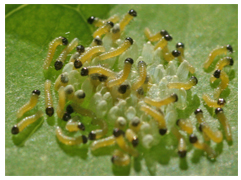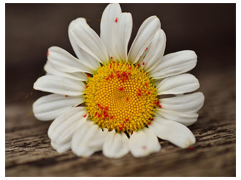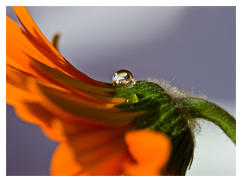Summer This Summer is Summer
August is the half way point for us Desert folk; half the summer is behind us with half the summer to go. Gardening advice remains the same; do little but keep an eye open. June & July gave us everything summer has to offer. High, high heat with low humidity damaged a great many shrubs and trees. Plants that ‘never suffered before’ have suffered indeed this year. Some of you learned what happens when you don’t quite water deeply enough. Ficus hedges and Tipuana Tipu trees completely defoliated within days of the 122 degree highpoint. Plant material can be very forgiving when under watered during cooler months but with high heat, there is no such leniency. New growth quickly reappeared as the humidity rose. Sun damage remains visible on many other hedges and trees with no signs of recovery to date. It is unsightly but not uncommon. Carolina cherry (prunus) and pittosporum are classic examples. Plant material tends to shut down during periods of high heat, there is no new growth. This is where humidity comes in. Warm, humid days provide a great growing climate and new growth should appear soon enough. Fortunately, August and September will likely provide that humidity. Don’t prune burn damage away just yet; believe it or not, this eyesore helps to protect tender new growth and August can still get pretty hot.
 Pests never seem to take a break and summer is no exception. We are seeing damage on Tecoma foliage (aka yellow bells) where new growth becomes skeletonized; Leaf rollers are the culprit. These tiny little worms wrap themselves up in the leaves as they eat. Boring beetles and root borers (same critter/different form) attack Palo Verde from all sides. Big worms (or grubs) show up in the soil. They eat away at the roots causing the tree to topple. Later these grubs morph into beetles. These beetles bore holes into tree limbs which kill off whole sections of the tree. Cottony looking Mealy bug can infect hibiscus, pittosporum and cactus alike. The same goes for scale which is a bit more crusty in appearance. Over-watering is a huge contributor to both Mealy bug and Scale. Even with water correction, you will still need to treat the pests. The recent haboob or dust storm left its own issues to contend with.
Pests never seem to take a break and summer is no exception. We are seeing damage on Tecoma foliage (aka yellow bells) where new growth becomes skeletonized; Leaf rollers are the culprit. These tiny little worms wrap themselves up in the leaves as they eat. Boring beetles and root borers (same critter/different form) attack Palo Verde from all sides. Big worms (or grubs) show up in the soil. They eat away at the roots causing the tree to topple. Later these grubs morph into beetles. These beetles bore holes into tree limbs which kill off whole sections of the tree. Cottony looking Mealy bug can infect hibiscus, pittosporum and cactus alike. The same goes for scale which is a bit more crusty in appearance. Over-watering is a huge contributor to both Mealy bug and Scale. Even with water correction, you will still need to treat the pests. The recent haboob or dust storm left its own issues to contend with.  Heavy dust on plant material invites Mites to settle in on roses most often but can infect juniper, cypress, bougainvillea, pittosporum, vinca—just about anything. The best defense here is to keep plant material clean. Use the blower or rinse your plants down occasionally. Don’t guess at the problem; bring us in a leaf sample to best diagnose the issue and get you on the road to recovery.
Heavy dust on plant material invites Mites to settle in on roses most often but can infect juniper, cypress, bougainvillea, pittosporum, vinca—just about anything. The best defense here is to keep plant material clean. Use the blower or rinse your plants down occasionally. Don’t guess at the problem; bring us in a leaf sample to best diagnose the issue and get you on the road to recovery.
 On the topic of watering, our mantra remains the same. Water once-a-day and let the water run long enough to deeply soak the roots. The type of irrigation system you have dictates how long the water stays on. Check for clogged heads. Check your water times. Early in the day is best. Plant material needs to dry out between watering to ensure healthy plants. A wilting plant does not necessarily mean a thirsty plant. Plants get hot just like the rest of us. Be sure the irrigation system is in proper working order. Double check your time clock. Summer power outages can reset the clock to factory defaults which is often too much water. Give your irrigation a break when there are extended days with high humidity, this allows the soil to really dry out. Just don’t forget to turn the clock back on to its regular cycle. Fertilize with organics when the humidity sets in, great for the growing season. Keep your eyes peeled for pests.
On the topic of watering, our mantra remains the same. Water once-a-day and let the water run long enough to deeply soak the roots. The type of irrigation system you have dictates how long the water stays on. Check for clogged heads. Check your water times. Early in the day is best. Plant material needs to dry out between watering to ensure healthy plants. A wilting plant does not necessarily mean a thirsty plant. Plants get hot just like the rest of us. Be sure the irrigation system is in proper working order. Double check your time clock. Summer power outages can reset the clock to factory defaults which is often too much water. Give your irrigation a break when there are extended days with high humidity, this allows the soil to really dry out. Just don’t forget to turn the clock back on to its regular cycle. Fertilize with organics when the humidity sets in, great for the growing season. Keep your eyes peeled for pests.
Remember Moller’s is here for you every day but Sunday through September. Continue with the lazy days of summer — at least when it comes to the garden.